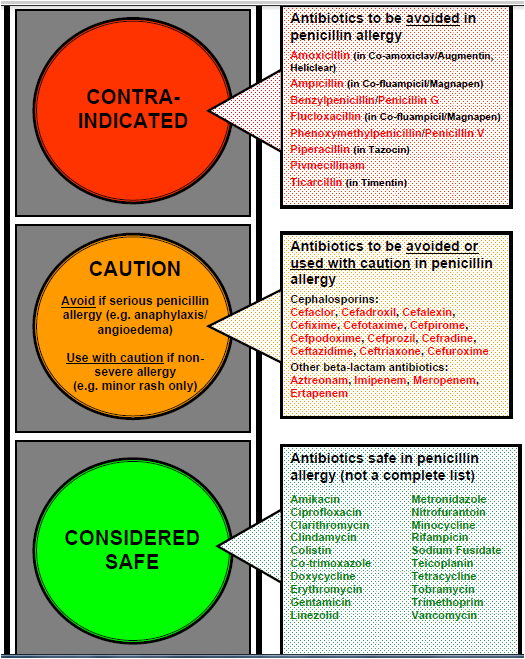

The authors noted that from January 2012 to September 2014, 950 of 1,119 (84.9%) patients with documented β-lactam allergies received non-β-lactam agents for surgical prophylaxis, which was reduced to 164 of 1,089 (15.1%) patients from July 2016 to September 2018 (P <. Usage of this chart was incorporated into surgical prophylaxis guidance starting in 2014 at their 537-bed community teaching hospital.

The type of allergic reaction and the specific agent involved are important, as most type I hypersensitivity reactions involve R-group side chains of the β-lactam ring, properties of which differ from one agent to another and thus influence allergy cross-reactivity.Īuthors of a recent study in Clinical Infectious Diseases compiled side-chain-based cross-reactivity data into a detailed chart that recommends strategies for assessing risk of allergic reaction based on the agent to be prescribed and the agent to which a patient may have had a prior allergic reaction. Utilization of an Antibiotic Side-chain-based Cross-reactivity Chart to Improve Surgical ProphylaxisĬlarification of penicillin allergy status has emerged recently as an important antimicrobial stewardship topic, as it can lead to improved prescribing practices. Medical Education Community of Practice.Fellows-In-Training Career & Education Center.myIDSA Practice Managers Community Opt-in Form.Antimicrobial Stewardship Centers of Excellence Program.


 0 kommentar(er)
0 kommentar(er)
